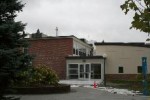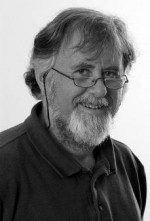What’s in a name?

There are generally two ways to have a building named after you. You can earn it by giving of yourself, or you can pay for it, like is done with stadiums.Florence A. Black’s love and devotion to Castleton State College and her students earned her the honor of her name on the side of the school’s science building year’s ago.
Some past and present students believe that a $2 million grant to expand the building caused her name to disappear and be replaced by former Vermont Sen. James Jeffords name.
Was it the money?
Castleton State College President David Wolk said Jeffords’ help in securing the $2 million was not the reason for removing Black’s name and replacing it with his. Jeffords deserved “special recognition” because of his “contributions to our state and nation, Wolk said in an e-mailed response.
Furthermore, Jeffords, like Sen. Robert Stafford, was a native of Rutland County. The renaming of the science building also created symmetry with the Stafford library and the newly named Senators Courtyard between the two buildings, Wolk said.
With the recent passing of Stafford and Jeffords’ wife, Wolk said, “We wanted Senator Jeffords to receive this well deserved recognition .during his lifetime.”
After Wolk spoke to colleagues on campus, he put the idea before the Board of Trustees saying the naming of building is reserved for people that are of great distinction.
But what about Black?
On April 24, 2006, Wolk spoke at the groundbreaking and dedication ceremony of the science center, which would from that point on, no longer be know as The Black Science Center but, The Jeffords Center for Science and Mathematics.
“In our new science and mathematics center, we will not forget Dean Florence Black, whose name graces the buildings to my left. How could we? Her illustrious career as teacher and administrator helped shape the Castleton of today,” he told the crowd.
Wolk went on to say at the dedication that Black would be memorialized inside the facility in the atrium, with a placque and photos – much like a display he’d seen at another college.
‘In the new enlarged and renovated science and mathematics center, the central atrium at the heart of the facility will be named in her honor, the Dean Florence Black Atrium. An atrium is a sunlit gathering place; it is also – as our anatomy and physiology students will tell you – a chamber in the heart,” he said at the ceremony.
But while alums Alice Kenyon Culver (1957) and Jean Beam (1961) were very glad to hear that their beloved Dean Black would not be forgotten, both woman still believe that Black’s name should have been left alone and Jeffords should have gotten the plaque on the inside wall.
“They should name the new one after Jeffords. The old building is historical to the college, and her name goes back in history. I don’t understand. She should be on the historical part of the building not the new one,” Beam said.
Those sentiments were echoed by Culver who said, “When your name is on the outside everyone sees it . on the inside only the students and staff see it. I think they should have kept it (Black’s name) on the main building. But since they didn’t I am delighted that they are going to remember her, at least, in one of the other parts of the building.”
Present day students like Teresa Messenger, cynically proclaimed that they understand “the money” was the reason for rededicating the science building. Senator Jeffords did help bring home the money needed for major renovations to the building, and students realize that, she said. The improvements including a new lecture hall, classrooms, vestibule, and environmental controls, are welcomed by all. Yet they feel uncomfortable knowing that Black’s name was replaced with another.
Messenger and other student’s asked questions like”how come they couldn’t have just named the lecture hall, or the new part after him?” or “did they think because she’s (Black) dead she’ll never know?”
One student who wished to stay anonymous said, “It’s as if the buildings are up for the highest bidder. It’s something they’d do at Harvard.”
Students said it feels “wrong” to them, like when a grave, monument or church is vandalized. They may not have been around when it was erected, but they have been taught not to disrespect it.
Black’s former students say they understand the college was grateful for Jeffords help, but if the present trustee’s had known Black, they may not have removed her name from the outside walls of the science center.
Who remembers Black?
Culver and her classmate Barbra (Stacey) Brooks sat around a table in Brooks’ spotless kitchen, surrounded by oak cabinets and white woodwork, flipping through their Castleton yearbooks reminiscing about their beloved dean. Culver claimed “she was a great. great woman” and Brooks nodded in agreement.
Brooks spoke of the fun and comradery they shared with Black when she chaperoned bus trips.
As Culver demonstrated how Black, a rather large woman, would stand in front of the students and pull the fabric away from her ample bosom trying to stretch the fabric, these two retired school teachers giggled like freshmen.
Culver remembered how she would have to borrow the state car to pick up photos for the year book, and the dean would recommend that she go late in the afternoon so she could stay in Rutland and shop or catch a movie. Black would tell her to return the keys in the morning.
“She probably didn’t know that I couldn’t afford to shop,” said Culver.
Culver talked about the infectious smile that was always on the dean’s face and how she loved to laugh. She said that Black enjoyed the students and wanted them to enjoy their time at Castleton. It was a lesson both women took with them into their own classrooms.
Culver learned of the renaming of the science building at her 50th class reunion this past summer from President Wolk.
“I have never heard of a college taking one person’s name off a building and replacing it with someone else’s,” she said.
Brooks, recuperating from hip surgery, did not attend and just recently learned of the change.
“It doesn’t matter if her name was replaced with a man or a woman’s . It’s a stinkin thing ta do!” she declared, shaking her head from side to side.
When asked how they felt the renaming fit with President Wolk’s assertion that “Castleton is the small college with the big heart?” Brooks agreed with Culver’s claim that Dean Black was “the heart.”
Beam also spoke of Black as the heart of the school. While having her hair done, she related how Black’s door was always open and students could just stop by any time, no appointment necessary.
“She would look up from her desk and her face would light up. She would get a huge smile across her face like your grandmother. It made you wanna crawl up in her lap,” Beam said.
The admiration Beam still holds for Black was apparent. She was adamant the college should have come up with another way to honor Jeffords that would not have smacked of disrespect for a woman who made Castleton her life’s work.
Black may have been loved by her students for her warmth and humor, but she was also a loyal committed member of the faculty and her contributions to the college spanned nearly 50 years during which Castleton grew from the Normal School, to the Teacher’s College, into the State College.
Why was the science building named Black in the first place?
Upon arrival in 1922, Black served as the woman’s athletic director and over the years that followed she filled many roles including professor of geography, dean of students, dean emerita, and even twice held the title interim president. After her retirement she was named director of Alumni Affairs.
In 1970, Rutland Herald reporter Aldo Merusi reported on the tribute paid by then Dean of Students Alfred F. Ramport, at the dedication of the science building. Ramport spoke of her “humor, wisdom, an understanding and her ability to change with change to live in the future and not in the past.”
Ramport also told stories about her playing drums, and reprimands from the president for wearing her gym uniform in a Main Street store and riding a bike on the sidewalk.
Ramport said that they had tried to name the building after her when it was first built in the 50’s, but Black refused the honor.
“So it is only proper that today we dedicate both buildings, the old and the new, in her name,” Ramport said that day.
The cost of the expansion was $1 million.
In a press release about the naming of the new science facility, Francis Carpenter, a college trustee, said that “No one, living or dead has done more, or as much for Castleton as Florence Black”
Scott Roper, C.S.C.’s current geography professor, shared those thoughts saying “the present day geography department would not exist without Florence Black.”
Roper is part of a committee that is presently working on the atrium dedication to Black. The committee also consists of Ennis Duling, and Dean of Administration Bill Allen.
Duling says that the committee is “gathering photos so that we can have a display near the bronze plaque in the lobby.”
“I hope that the presentation will be the most interesting on campus,” he said.
Duling is also currently gathering information for a feature article about Black and her life at Castleton for the winter issue of the alumni magazine.
Coincidentally, a Feb. 28, 1984 C.S.C. daily information sheet reported the passing of Black with instructions to send memorial donations in her name to the C.S.C. Business Manager. Unrelated on the same info sheet was a report of a campus visit by Rep. James Jeffords who, “if re-elected would become the ranking member of the House Education Committee.”
This was the beginning of James Jeffords own dedication to education. Over the years, his commitment to Vermont and its students has been unwavering.
President Wolk at the dedication ceremony said, “Senator James Jeffords has been a strong and persistent advocate for advancing mathematics and science education in our schools and colleges. No one in this country has been a better spokesman.”
Like Black, Jeffords is loved by those he served and has been honored at every election with their trust, proclaimed with a black mark next to his name on the ballot.
Students feel he is worthy and deserving of his name on one of Castleton’s walls, but some simply feel not at the expense of Black.





